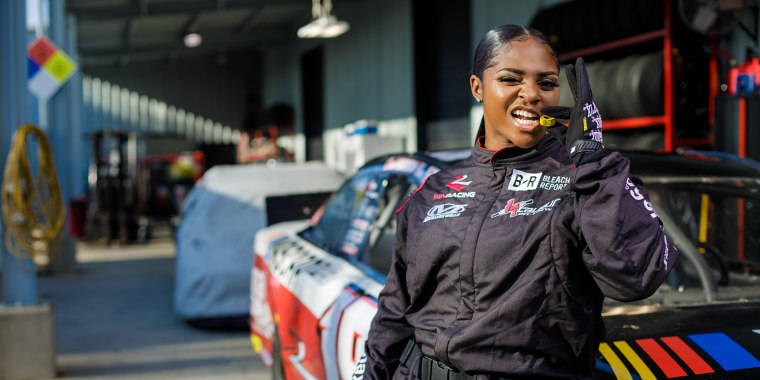On a Monday afternoon in April 2016, Brehanna Daniels was eating a Chick-fil-A chicken sandwich in Norfolk State University’s cafeteria in Virginia when she felt a strong tap on her shoulder. The senior shooting guard on the women's basketball team turned around to find Tiffani-Dawn Sykes, the university's NCAA eligibility specialist at the time, presenting her with a life-changing opportunity.
She just didn’t know it yet.
“Girl, NASCAR?” Daniels, 27, remembered asking. “I don’t even watch NASCAR. What are you telling me this for?” she continued. “That shows you how much I wasn’t in tune with NASCAR.”
But after watching a video of a pit stop during a race, Daniels was in awe. She had just two days to make a decision: either attend pit crew tryouts or videotape a six-hour baseball game for her campus internship. Almost five years later, Daniels, who is of Guyanese and African American descent, is now the first Black woman pit crew member in NASCAR.
“Wednesday morning, I woke up,” Daniels told TODAY by phone. “God told me, ‘Brehanna, you have to go to this NASCAR tryout.’ I was like, ‘You know what? I don't question that man upstairs.’”
In a matter of months, the Virginia Beach native went from dribbling a basketball to holding an impact wrench. Daniels’ new role entails, in her words, “controlled chaos” and a lot of responsibility, like changing tires and more in under 13 seconds as well as changing the face of the racing industry.
Trailblazing on the racetrack
The feeling of being “the first” or “the only one” isn’t new to Daniels. Growing up, she played on all-boys basketball teams, and when NASCAR hosted tryouts at Norfolk State, out of four students, she was the only woman. After a series of physical battery tests, she attended NASCAR’s Drive for Diversity National Combine in May.
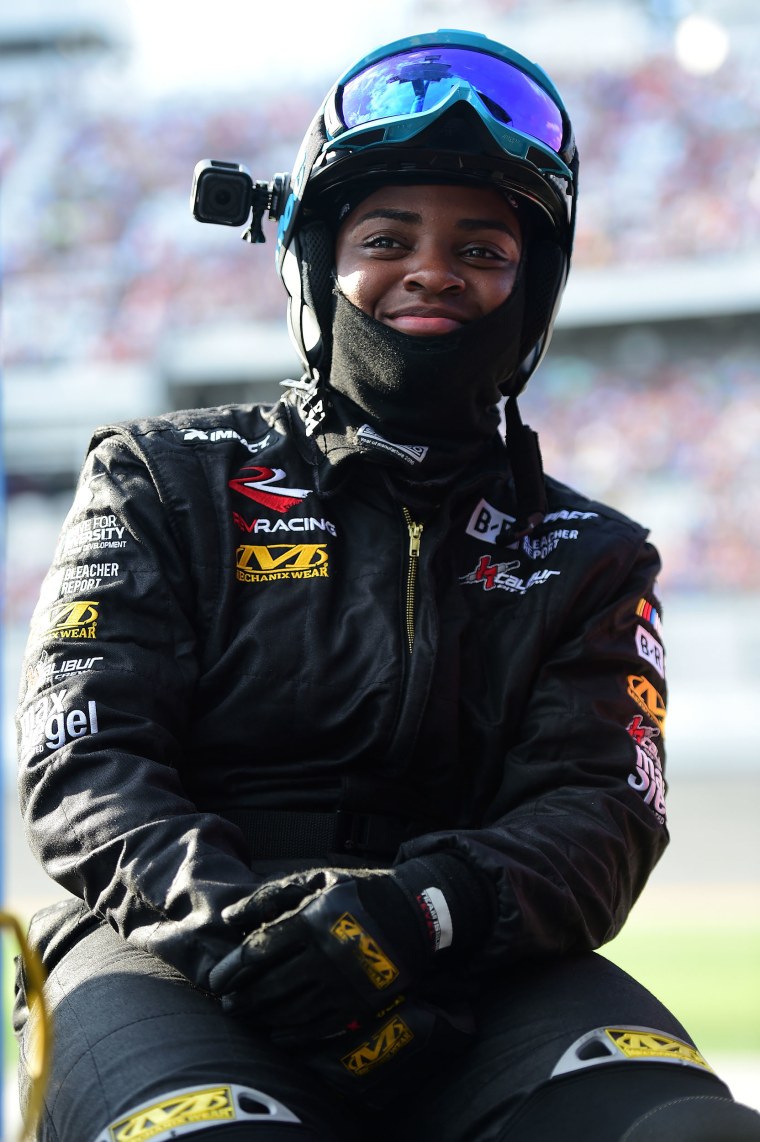
According to Brandon Thompson, the vice president of diversity and inclusion at NASCAR, the Drive for Diversity Program was created in 2004 with a mission “to expose the athletic opportunities within NASCAR to women and minorities in order to increase or widen the pipeline for career opportunities.” The program has two parts: one devoted to driver development and the other to pit crew development.
Out of approximately 24 participants at the combine, six were women while the rest were men, and only half would make it into the new class. When Daniels got the call that she had been accepted, she began crying.
“I didn’t know what I was getting myself into. It’s always rewarding to see your hard work pay off when you’re working toward something," Daniels said. "That was my goal, to be one of the ones selected. I even had more motivation because during the national combine, one of the guys came up to me ... and he was like, ‘Yeah, they say there’s no women that really make it in this.’"
It was during the six-month Pit Crew Development Program that she learned of her groundbreaking role.
“It means a lot to me to be in this position to be able to make a difference, to be able to make change," Daniels said.
On the raceway
The Drive for Diversity Program runs from September to February, when graduates are dispatched as the season kicks off. Daniels worked her first Automobile Racing Club of America race in Nashville, Tennessee, in April 2017; she made her national NASCAR debut in June later that year. Along with the thrill of being on pit road, she remembered the stares she received from people who were surprised to see a Black woman in the midst. She’s also endured vitriol from strangers on social media.
“Someone said, ‘Why does it matter that she’s Black?’ I even got called the N-word online. I was getting a whole bunch of messages,” Daniels said. “With all the hate, there are some positive comments. There are people saying, ‘Yeah girl, keep doing your thing!’ or ‘Oh, it's about damn time!’”
“NASCAR history is sports history, sports history is American history, and Black folks are a part of American history in every regard."
Erik A. Moses, the first Black president of any NASCAR track
Black fans across the country may have felt a similar sentiment following the changes NASCAR implemented after last year's Black Lives Matter demonstrations. The privately owned company formally banned the Confederate flag — despite its presence at events for over 70 years — from its races and properties after Bubba Wallace called for its removal last June. However, in the same month, Wallace, the lone current Black driver, found a noose hanging in his garage stall (federal authorities later determined that Wallace had not been the target of a hate crime). Daniels recalls how proud and emotional it was seeing the way the spectators, drivers and more rallied around him.
"I'm proud of (NASCAR's) growth," Daniels said. "When everybody was walking behind Bubba, I cried when I saw that happen. It was powerful because everyone realized they just wanted to show their support."
Daniels remains both grounded and uplifted by the support of her family, friends and the community she’s fostered through the Drive for Diversity Program, with members such as Breanna O’Leary, Dalanda Ouendeno and others. Ushered into the same cohort, Daniels and O'Leary were the first female graduates of the pit crew program; Ouendeno, a former soccer player at the University of Miami, was part of the 2019-2020 class. While Daniels was initially wary because no one in the sport looked like her, she wants people to see her and have “the motivation to come forward.”
Thompson, the vice president, said: “One of the things that we're most proud of is that not only was she able to make history, but the fact that she’s now gone on and helped other people to achieve the same thing. That speaks to the importance of representation and mentorship that Dalanda was able to see herself in that position because she watched what Brehanna did.”
The Pit Crew Development Program has 68 graduates working in NASCAR; the Driver Development Program has had more than 70 graduates since its inception, with notable names like Bubba Wallace, Kyle Larson and Daniel Suarez currently competing. The 2021 class features six male and two female drivers, three of whom are Hispanic, another three who are Black, one multiracial driver and one white driver.
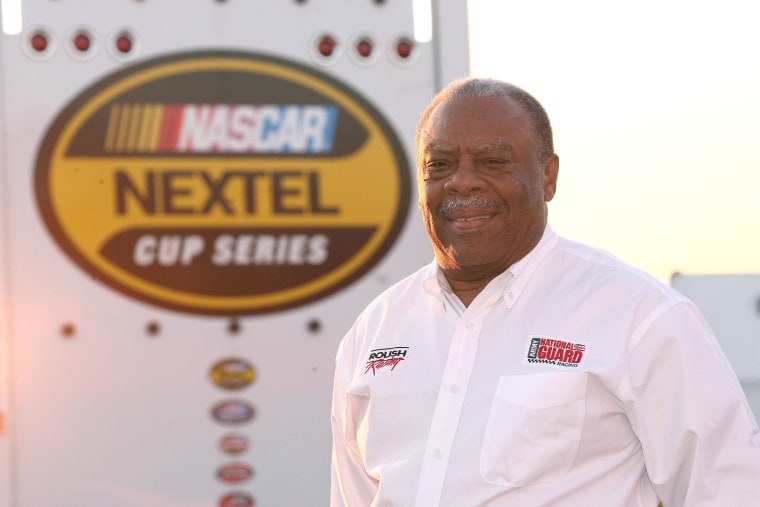
However, the overwhelming number of people who watch NASCAR are older white men. Per a 2011 study through Scarborough Research, 63% of the fan base is male while 37% is female, and 20% of fans are considered ethnic minorities. A 2017 Forbes article found that though drivers are becoming younger, viewers are getting older.
Though the spectator demographics remain stagnant, the wheels of change are turning.
NASCAR’S Black history
The National Association for Stock Car Auto Racing has only had two full-time African American drivers — Bubba Wallace and Wendell Scott — in its top series. An estimated 8%-9% of NASCAR fans are Black and gradually, Black leadership is increasing across the industry, from owners to presidents and more.
“It's fantastic not only because she's an African American but more particularly because she's a woman,” Erik A. Moses, the first Black president of any NASCAR track, told TODAY by phone. “With the speed, agility and strength that is needed in order to make those pit stops really quick, I love little girls and boys and others knowing that, you know, that is a role that is that is open to women."
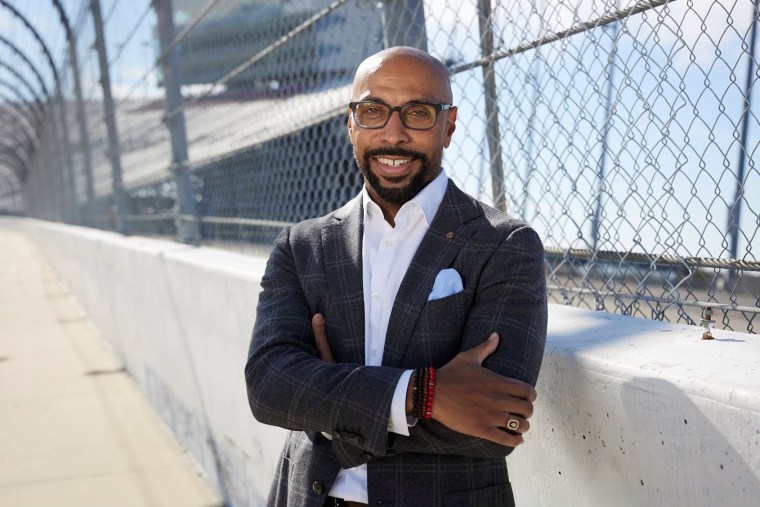
Besides representation and visibility, Moses — who assumed his role at the Nashville Superspeedway six months ago — noted that a major barrier to entry in automotive sports is access to capital and having the money to buy multiple, high-quality cars.
“I was surprised to learn how much money is spent by these race teams year over year to compete," he said. "That's just a hard thing to break into, which is why you see a lot of second- and third-generation drivers.”
Moses’ first experience on a racetrack was in the '90s while visiting the Richard Petty Driving Experience at Disney. Without familial connections, some would perceive him as an industry outsider, but he wants to push the door open for more candidates and audiences, exposing them to aspects of the sport beyond the surface level.
“NASCAR history is sports history, sports history is American history, and Black folks are a part of American history in every regard,” Moses said. “This sport is no exception to that. We know that representation matters, even if it's on television. It matters because it allows people to see what is possible.”
Sam Belnavis and the late Wendell Scott are some of the few Black men who have owned NASCAR teams. Scott, who spent most of his career driving cars he fixed himself, was the first African American to win a race in the Grand National Series, NASCAR’s highest level, in 1963.
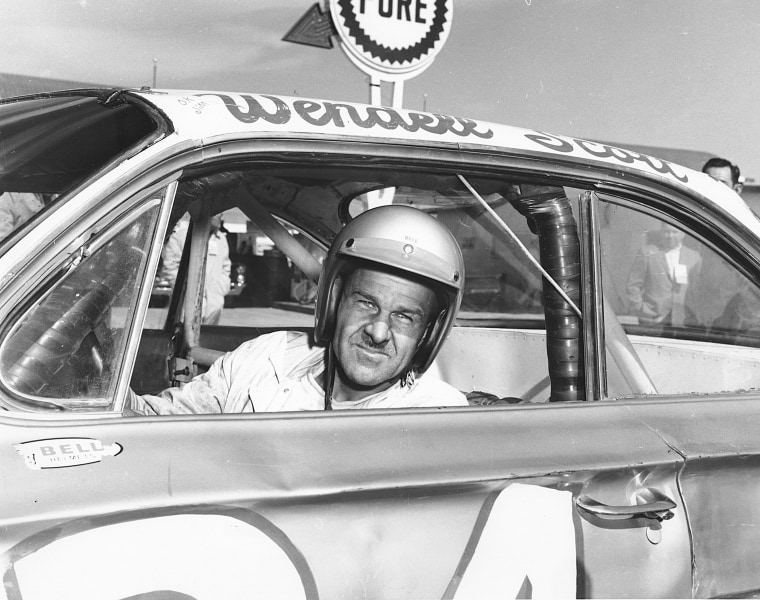
Despite winning $1,000, Scott never received the first-place trophy he earned. While the error was allegedly attributed to a two-hour-long scoring dispute, the question lingers over whether NASCAR was simply reluctant to recognize a Black man at the top of the field. The family-led Wendell Scott Foundation seeks to commemorate his legacy and provide mentoring, skills training and educational opportunities to youth. His daughter, Janis Deborah Scott Davis, said she was the shadow behind her gifted father, as her official role was her father’s scorekeeper.
“As a little girl, about 9 to 10 years old, all I wanted to do was be right by his side, watch everything he did, because I was amazed at how he could build an engine, install it in his race car and fire it up,” Davis told TODAY by phone.
The 70-year-old remembers going to races, hearing sexual innuendos and “the N-word from the rowdy fans” while in the score stand. The pain of seeing her father robbed of glory following what should’ve been a triumphant win still resonates.

“I want my grandkids and their kids to know what we did as a race, what we did as a race team and how we did it, and that they can do it too," Davis said. "I'm very proud of Brehanna. It was quite an honor to learn about and watch her actually performing in an actual pit crew. I want to say, 'Keep doing it, sister.' The reward is great in the long run.”
What's next?
Though she is the first Black woman pit crew member, Daniels hopes she isn’t the last. She wants to see more people of color at every level in NASCAR, from the crew chief to team owners and more.
Her advice to young women who want to follow in her footsteps? “Never put yourself in a box. Always be open to new opportunities. If you’re going to do something, do something that will impact others for the better.”
